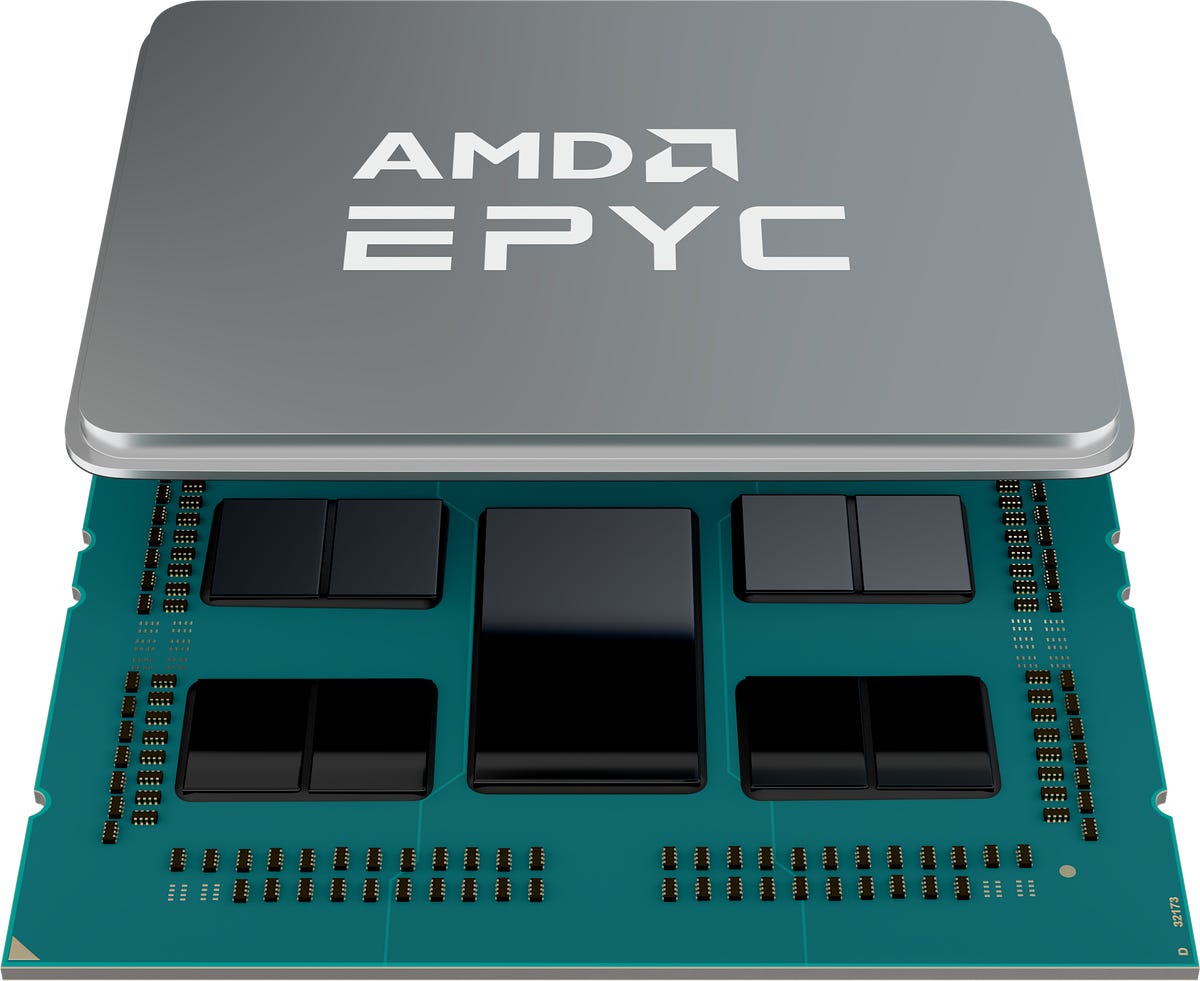AMD on Monday is officially launching Epyc Milan, the third generation of its Epyc server microprocessor (tune into the launch event at 11 am ET above). After hitting significant performance milestones and winning market share with previous generations, AMD says Milan will help it push further into the enterprise.
The new Epyc 7003 series processors offer up to 64 Zen 3 cores per processor. Compared with prior generations, they bring new levels of per-core cache memory, once again include PCIe 4 connectivity and eight memory channels. The new chips also include new AMD Infinity Guard security features, including Secure Encrypted Virtualization-Secure Nested Paging (SEV-SNP).
For the enterprise, the latest generation of Epyc chips increase transactional database processing by up to 19 percent and improve Hadoop big data analytic sorts by up to 60 percent, AMD says.

AMD first introduced the Epyc chip in 2017, shaking up a stagnant business that’s still largely dominated by Intel. The second-gen Epyc CPU (the “Rome” chip) debuted as the world’s first 7-nanometer server processor, and it helped AMD make inroads in the cloud and high-performance computing (HPC) markets.
Now that it’s on its third generation of the CPU, AMD will benefit from more visibility in the market, stronger customer relationships and a broader partner ecosystem, Dan McNamara, SVP and GM of AMD’s server business unit, told reporters.
Furthermore, he said, “We’re on this great execution cadence when it matters most… in this mega-cycle of compute.”
Connected devices driving the data from the edge to the cloud, driving demand for data center CPUS. Meanwhile, enterprises are going through a phase of digital modernization phase, turbo-charged by the pandemic.
The results of the ongoing “mega-cycle” were apparent in AMD’s most-recent financial results. During its Q4 2020 quarter, AMD’s sales of server and semi-custom chips (including Epyc CPUs) rose by 176 percent year-over-year to $1.28 billion.
AMD began shipping Milan to cloud and HPC customers in the fourth quarter. To win more enterprise customers, McNamara said it’s working with a broader ecosystem of partners and channels. AMD, he said, needs to become a “household name” in the channel ecosystem, as well as with enterprises.
“I’ve spent a great deal of time… going to that end customer the Fortune 1000 Enterprise and talking to the heads of infrastructure and making sure… we’re forming those relationships,” he said.
AMD is bringing the 3rd Gen chip to market with platform partners that include Asus, Lenovo, Cisco, ASRock and more. By the end of the year, there should be 100 new OEM platforms that include the Milan chip. So far, platforms include Dell’s portfolio of Dell EMC PowerEdge servers. The portfolio includes the new PowerEdge XE8545 for AI workloads, offering up to 128 cores of Milan CPUs, four Nvidia A100 GPUs, and optimized performance of Nvidia’s vGPU software in a dual socket, 4U rack server.
HPE’s new portfolio of HPE ProLiant servers and HPE Apollo systems also use the 3rd Gen chip. With the Epyc Milan, HPE says it’s secured 19 records in key areas for optimizing workload experiences, including virtualization, energy efficiency, database analytic workloads, and Java applications. Additionally, the HPE Cray EX supercomputer will leverage the 3rd Gen Epyc CPU.
In the cloud, there are already more than 200 Epyc-powered public instances. With the introduction of Milan, AMD says it’s on track to reach more than 400 this year.
That includes Oracle’s new E4 platform, which includes both bare metal and flexible VMs. The E4 standard instances use the 64 core processors, with a base clock frequency of 2.55 GHz and max boost of up to 3.5 GHz. The bare metal E4 standard compute instance supports 128 OCPUs (128 cores, 256 threads) with 256 MB of L3 cache and 2 TB of RAM and has 100 Gbps of overall network bandwidth.
According to Oracle’s Matt Leonard, customers are responding to the improved reliability and performance of AMD’s Epyc chips.
“We’ve seen customers migrate high-performance workloads on the AMD series where previously they had primarily been running those on Intel,” he told ZDNet. “That’s a validation of the AMD strategy that customers are trusting them to run their most important production workloads.”
As AMD rides the momentum of previous Epyc generations, it’s also undoubtedly benefiting from turbulence at Intel. Over the last few years, Intel has been dealing with manufacturing delays, as well as changes in leadership. During its fourth quarter, Intel’s Data Center Group, which sells chips for servers, saw revenue fall 16 percent year-over-year to $6.1 billion.
In January, Intel announced then-CEO Bob Swan would pass the baton to VMware CEO Pat Gelsinger.
Ross Brown, VP for Oracle Cloud Infrastructure, said he’s optimistic about Intel’s future with Gelsinger at the helm. That said, he told ZDNet, “I would never bet against AMD and the innovation they keep bringing.”




















